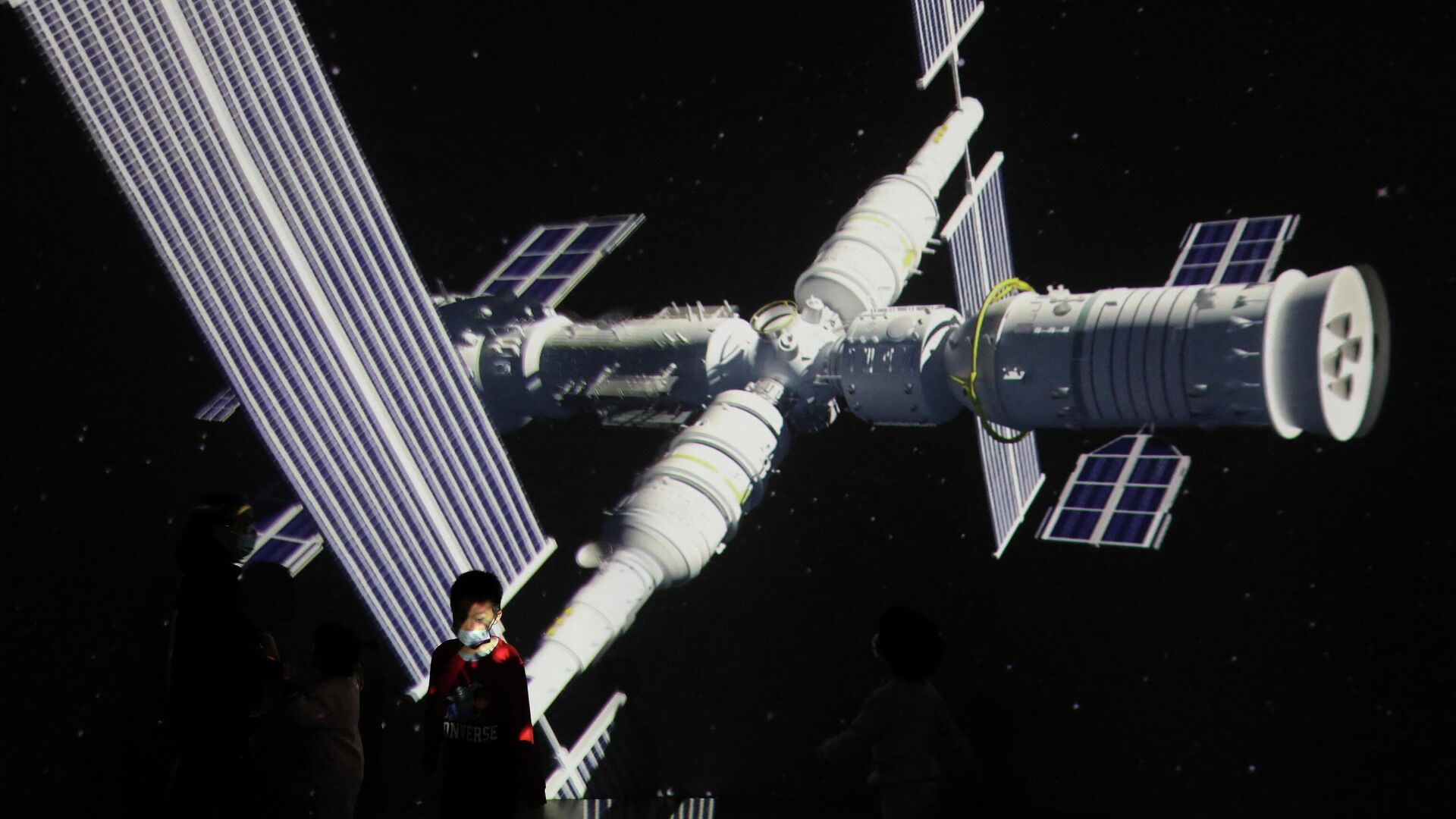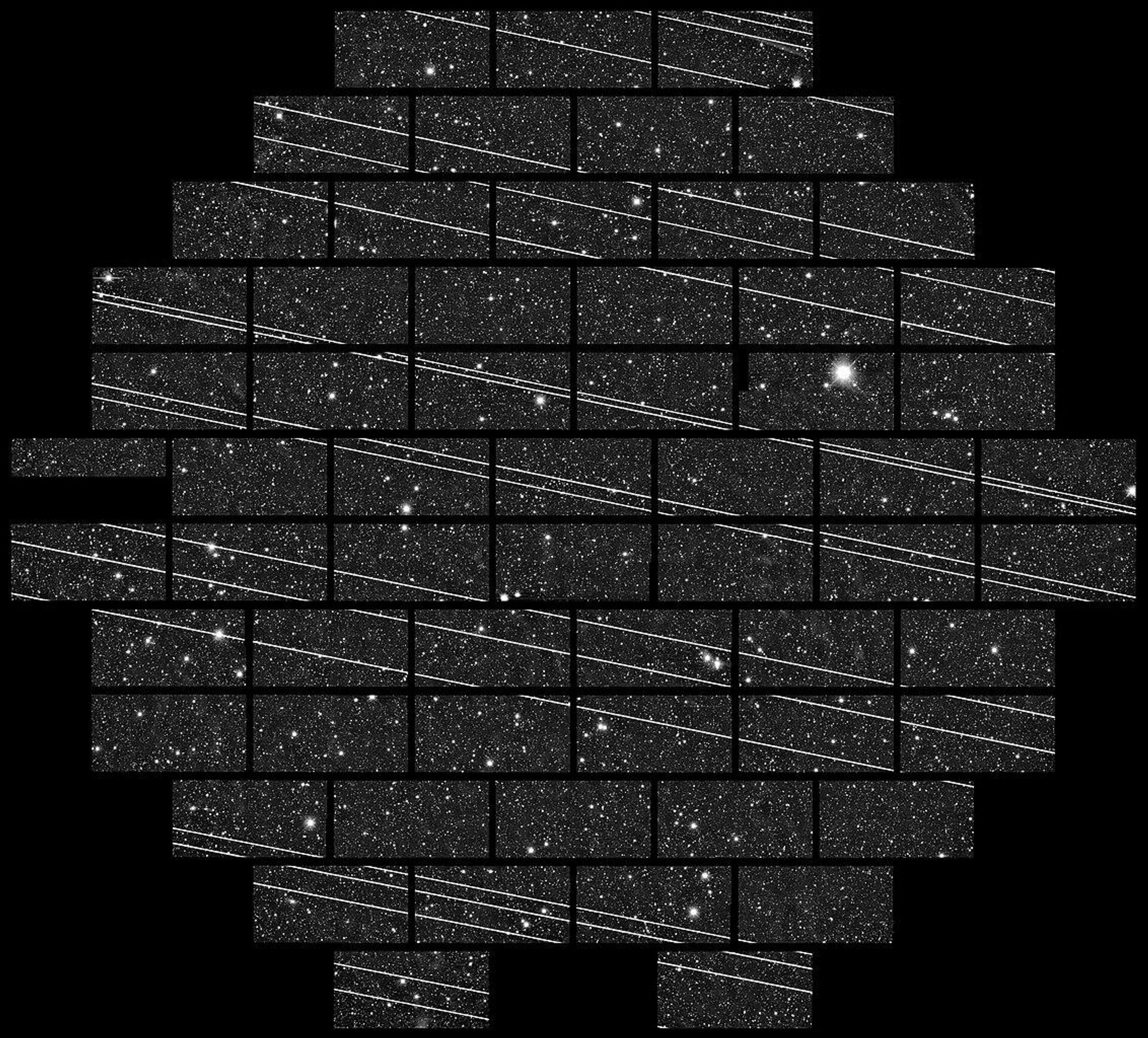Beijing Urges ‘Prompt Measures’ By US to Keep Elon Musk’s Satellites Away From Space Station
19:36 GMT 28.12.2021 (Updated: 16:57 GMT 12.04.2023)

© REUTERS / TINGSHU WANG
Subscribe
After two separate near-collision incidents earlier this year, the Chinese government has asked Washington to take action to protect its space station and taikonauts from the myriad satellites put into orbit by US defense contractor SpaceX.
“I can confirm that Starlink satellites launched by SpaceX of the US had two close encounters with the China Space Station in July and October this year respectively when Chinese astronauts were working there. For safety considerations, the China Space Station implemented preventive collision avoidance control,” Zhao Lijian, a spokesperson for the Chinese Ministry of Foreign Affairs, told reporters on Tuesday.
China’s new space station, Tiangong (Sky Palace), was put into orbit earlier this year and orbits at an altitude of between 210 and 280 miles above the Earth. Three Chinese taikonauts blasted off from Jiuquan in October for a six-month stay on the station, which will be much smaller than the International Space Station (ISS) but will be roughly equivalent in size to Russia’s retired space station, Mir, when fully assembled.
Zhao noted some of the obligations all space-faring nations hold under the 1967 Outer Space Treaty, such as regarding all astronauts as “envoys of mankind” rather than representatives of a particular nation or people, and of the responsibility to inform other treaty signatories or the United Nations of potential dangers to astronauts in space. He also noted that nations “bear international responsibility for national activities in outer space” conducted by their private companies.
“The US claims to be a strong advocate for the concept of ‘responsible behavior in outer space,’ but it disregarded its Treaty obligations and posed a grave threat to the safety of astronauts,” Zhao added. “This is a typical double standard.”
“Exploration and peaceful uses of outer space is a common cause of all humanity. Guided by the vision of advancing the welfare of all, China is committed to peaceful uses of space. The US should respect international order in space based on international law, take prompt measures to prevent such incidents from recurring, and act responsibly to safeguard the safety of in-orbit astronauts and the safe and steady operation of space facilities,” the spokesperson added.
Neither Washington or SpaceX have responded to news about China’s letter to the UN or Zhao’s Tuesday comments.
Starlink is a constellation of hundreds of low Earth orbit satellites used by SpaceX to provide broadband internet service for its customers. SpaceX has already put more than 1,600 Starlink satellites into orbit, but has already filed paperwork to launch as many as 42,000, according to Space.com.

Starlink Satellites Imaged from CTIO
For context, there were just 7,200 manmade satellites in total orbiting Earth as of September, according to UN figures. According to a space junk tracker operated by the US space agency NASA, there are some 27,000 pieces of manmade debris caught in orbit, as well.
SpaceX’s grandiose plans for Starlink have been criticized from a number of perspectives, including the danger posed to people and other objects in orbit by there being more objects in orbit, but also for astronomers, who complained to the UN in August that the zippy satellites are obscuring their views of deep space.
“The rising population of space debris increases the potential danger to all space vehicles, including to the International Space Station and other spacecraft with humans aboard, such as SpaceX’s Crew Dragon,” NASA says on its website. The Crew Dragon is the only way for US astronauts to get to the ISS since the Space Shuttle was retired in 2011 and until Boeing’s Starliner and the Orion spacecraft become useful in 2022.
"The worst thing in the world is to have a collision," SpaceX President and CEO Gwynne Shotwell told Space.com in September, adding that the company’s satellites have autonomous collision avoidance technology.
Of course, so do self-driving cars made by Tesla, another company owned by SpaceX founder Elon Musk, and they have a worrisome habit of driving into things at full speed.
Ironically, in March, SpaceX signed an agreement with NASA to steer its satellites away from the ISS if they would come within 3 miles of each other.
Jonathan McDowell of the Harvard-Smithsonian Center for Astrophysics told AFP that astronomers have “really noticed the increase in the number of close passes since Starlink started getting deployed," adding that any collision would likely "completely demolish" the Chinese space station.
In November, Russia tested an anti-satellite (ASAT) missile on one of its own derelict satellites over the Arctic Ocean. The ASAT test was carefully executed to minimize danger to the ISS, which orbits in a different direction and different altitude than the Tselina-D satellite that was destroyed. However, the US derided the test as “reckless” and “destructive,” claiming the debris “now threaten the interests of all nations.”
After the test, the four astronauts on the ISS, one of whom was Russian, sheltered for a period of time in their departure space capsules in case of a potential impact, but the debris never posed an active threat to the space station or the people inside it.


